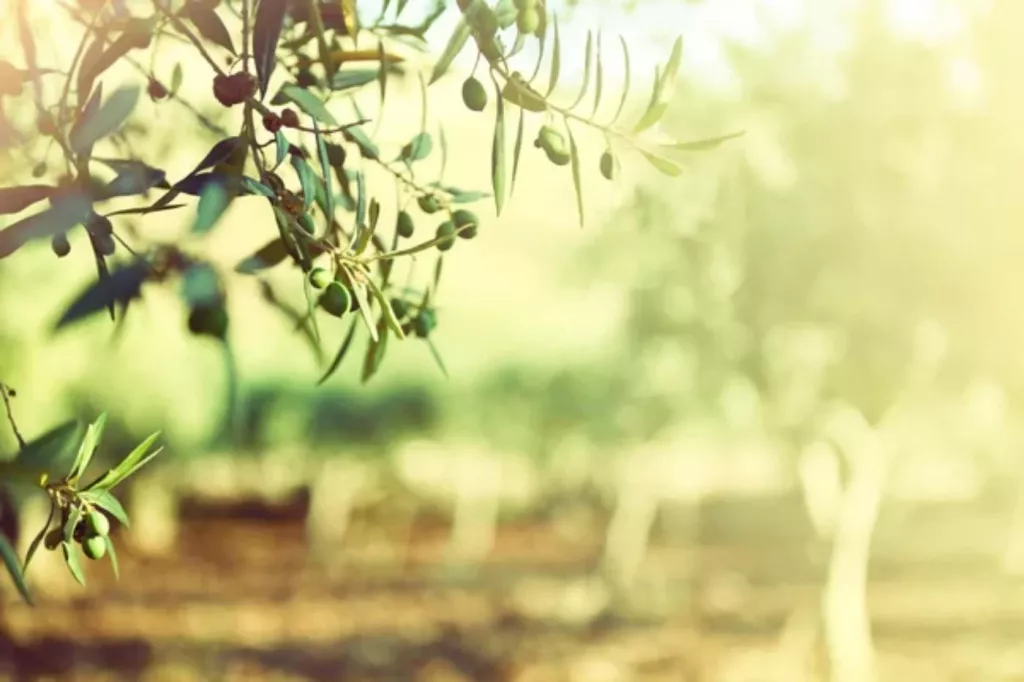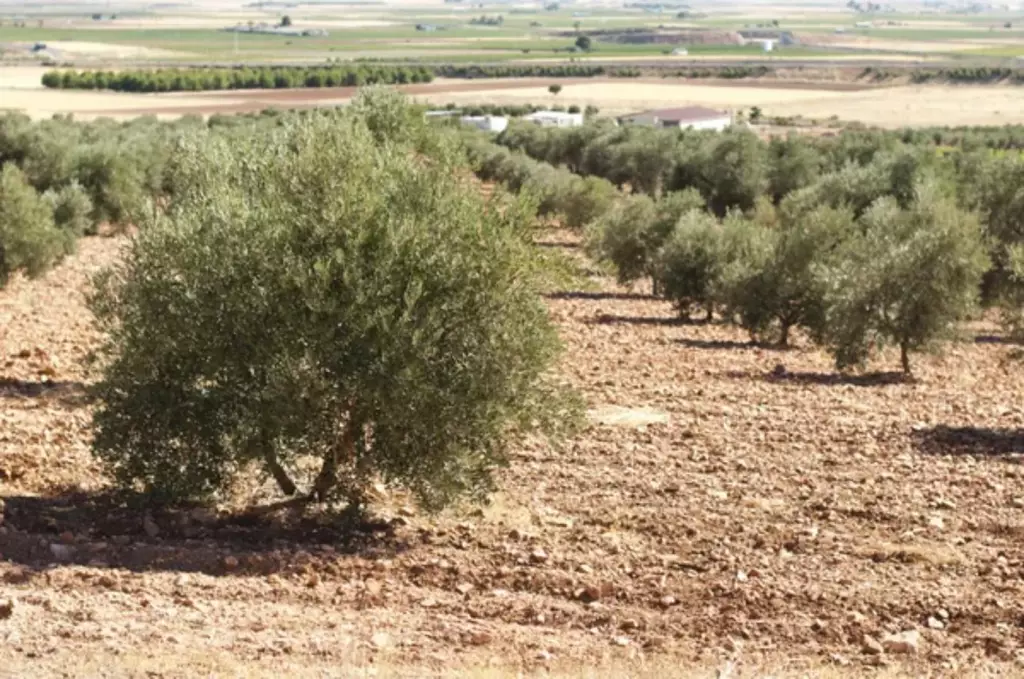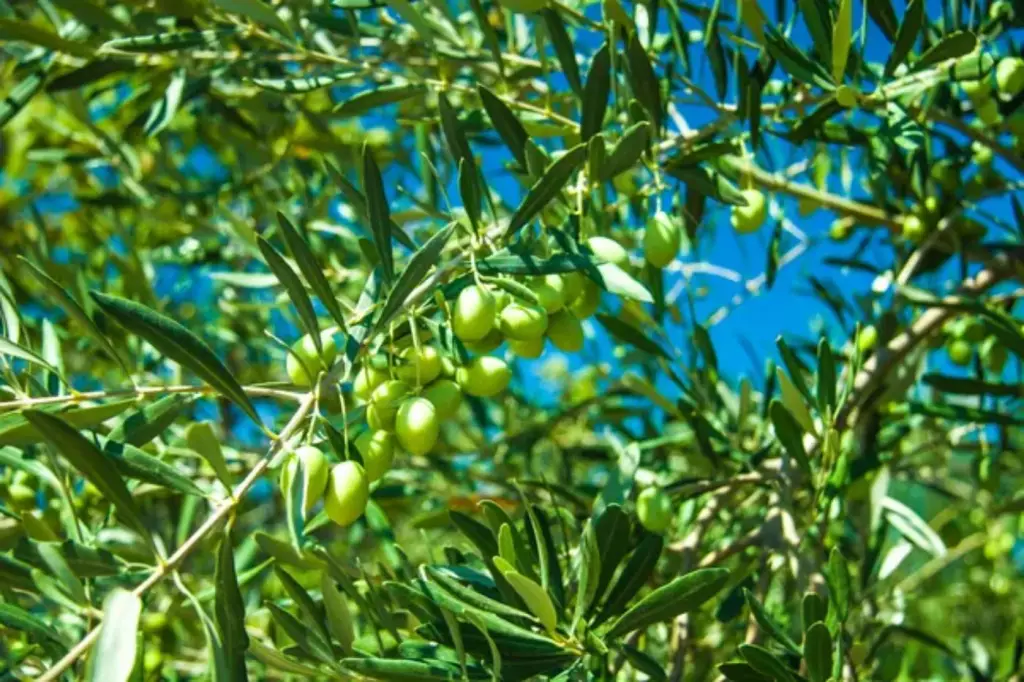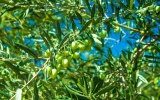Can You Propagate Olive Trees? (4 Methods)
Olive trees are not only known for their durable wood and nutritious fruits but also for their adaptability to various propagation methods. By mastering various propagation techniques, you can significantly enhance your olive production, contributing to the annual yield of over 20 million tons of olives worldwide. In this article, we'll explore the detailed processes and practical steps involved in propagating olive trees using four primary methods.
Olive trees can be propagated using four primary methods: cuttings, air layering, seeds, and grafting. Each method varies in difficulty and time to fruit production, with cuttings and air layering being more popular for faster results, while seeds are generally slower and grafting can introduce desirable traits.
Did you know you can also propagate olive trees in water? It's quite a neat trick. Let's find out how this method works as you read the article further.
Summary
- Cutting propagation is an efficient and economical method that ensures genetic consistency, albeit sensitive to seasonal variations and needing precise environmental conditions.
- Air layering produces larger starter plants with a high success rate and genetic preservation, but it demands more labor and time compared to other methods.
- Seed propagation allows for the production of numerous trees inexpensively but results in genetic diversity and delays in fruit-bearing.
- Grafting merges the favorable characteristics of two olive varieties, though it demands expertise and labor, it can achieve high success with proper technique management.

On this page:
- Effective Methods To Propagate Olive Trees
- Propagating Olive Trees from Cuttings
- Air Layering Is An Effective Method of Propagating Olive Trees
- Propagating Olive Trees From Seed
- Propagating Olive Trees Through Grafting
- Can You Propagate Olive Trees in Water?
- Best Time to Propagate
- How Long Can You Propagate Olive Trees?
- Common Challenges in Propagation
- Growing Olive Trees Under Different Conditions
Effective Methods To Propagate Olive Trees
When propagating olive trees, you have four primary methods to choose from: cutting propagation, air layering, seed propagation, and grafting.
| Method | Pros | Cons |
|---|---|---|
| Cutting propagation | Simple, low-cost, quick, preserves genetic identity | Season-dependent, requires careful climate management |
| Air layering | Larger initial plants, high success, preserves genetics | Labor-intensive, slower, size limitations |
| Seed propagation | Large numbers, low cost | Genetic variability, long to fruit, may lose characteristics |
| Grafting | Combines best qualities, high success with skill | Requires skill, labor-intensive, risk of failure |
Propagating Olive Trees from Cuttings
How do olive trees grow from cuttings?
Propagating olive trees from cuttings leverages parts of an existing tree to grow new ones, making it a cost-effective alternative to buying new plants. Let's delve deeper into the process, including the types of cuttings you can use and how to increase your chances of successful propagation.

Types of cuttings
Olive trees can be propagated using three main types of cuttings, each corresponding to a different stage of growth and wood hardness:
Softwood cuttings
These are taken from the newest growth of the olive tree, characterized by their flexibility and green color. Softwood cuttings are typically harvested in late spring or early summer when the tree's growth is most vigorous.
They are the most delicate type of cutting and can dry out quickly, but they also tend to root the fastest.
Semi-hardwood cuttings
As the growing season progresses, the new growth begins to mature and harden slightly, moving into what is known as the semi-hardwood stage.
These cuttings are firmer and offer a good balance between flexibility and sturdiness. Semi-hardwood cuttings are usually taken in late summer or early fall.
Hardwood cuttings
Taken from the mature, woody stems of the olive tree during the dormant season (late fall to winter), hardwood cuttings are the toughest type.
While they may take longer to root compared to softwood and semi-hardwood cuttings, they are less prone to drying out and can be more forgiving for beginners.
How to increase success rates
Regardless of the type of cutting you choose, there are several steps you can take to increase your chances of success:
-
Use of rooting hormone: Applying a rooting hormone to the cut end of your cutting can significantly enhance root development. Rooting hormones contain substances that mimic natural plant growth hormones, encouraging faster and stronger root growth.
-
Choosing the right varieties: Some olive varieties root more readily from cuttings than others. Varieties such as Arbequina, Picual, and Kalamata are known for their good rooting characteristics and are recommended for propagation efforts. You can also try to choose cold-resistant varieties stated in this article.
Air Layering Is An Effective Method of Propagating Olive Trees
With air layering, you wound the olive tree's stem and wrap it with moist moss or material, which encourages roots to form at the wound site.
This method is suitable when you want to replicate a mature tree without severing the branch until root development occurs.

It's especially beneficial for trees where cuttings are difficult to root or for generating a larger plant more quickly than could be achieved from seed or cuttings. Let's explore the steps and considerations involved in air layering an olive tree.
The process of air layering
-
Selection of the branch: Choose a healthy branch on the mature olive tree that you wish to propagate. The branch should be at least one to two years old and exhibit vigorous growth.
-
Wounding the branch: Make a shallow cut around the circumference of the branch or remove a small strip of bark. This wound interrupts the downward flow of nutrients and encourages the plant to form roots at the site of the injury.
-
Applying rooting hormone: Although not always necessary, applying rooting hormone to the wound can enhance root development.
-
Wrapping with moist material: Surround the wounded area with moist sphagnum moss or a similar material. The moisture is crucial for root development and must be maintained throughout the rooting process.
-
Sealing the wound: Wrap the moist moss with plastic wrap to keep the moisture in and secure it with tape or ties. Ensure that the plastic is tight enough to prevent the moss from drying out but not so tight as to damage the branch.
-
Waiting for root development: Roots should begin to form within a few months. The exact time can vary depending on the climate, the variety of the olive tree, and the conditions under which the tree is grown.
-
Severing and planting the new tree: Once a healthy root system has developed within the moss, the branch can be cut from the parent tree. Plant the newly rooted branch in a pot with well-draining soil or directly into the ground, depending on your preference and climate.
Considerations when doing air layering
- Timing: The best time to start air layering is in early spring, just before the growing season begins, although it can be done throughout the growing season if conditions are right.
- Care for the rooted branch: Once separated, the new plant will require careful attention to watering, light, and soil conditions as it adjusts to its new environment.
Propagating Olive Trees From Seed
Although infrequently used due to the long time frame involved, it's possible to grow olive trees from seeds. This method requires patience, as it can take many years for the olive tree to mature.
The process of seed propagation
-
Seed collection and preparation: For olive trees, this means harvesting ripe olives and then extracting the seeds from the fruit. The seeds often require cleaning and sometimes stratification or scarification to break dormancy and encourage germination.
-
Germination: After preparation, the seeds are sown in suitable growing media such as soil, peat, or vermiculite. The conditions for germination vary among species but typically require appropriate moisture, temperature, and sometimes light. Olive seeds, for example, need a warm temperature to germinate, which can be provided by a greenhouse or indoor environment.
-
Growth and care: Once the seeds germinate, the young plants (seedlings) need proper care, including adequate water, light, and nutrients. They may also require protection from pests and diseases. The seedlings of olive trees can take many years to grow to a significant size and even longer to mature and produce fruit.
Propagating Olive Trees Through Grafting
Grafting in olive trees is a horticultural technique that allows growers to combine the best characteristics of two different olive varieties to create a single plant with desirable traits. The process involves two main components: the scion and the rootstock.
Scion is the top part of the grafted tree
The scion is a piece of a mature olive tree that is selected for its superior fruit quality, disease resistance, or other valued attributes. It contains the buds that will grow into the new tree's branches, and leaves, and eventually produce fruit.
The scion is essentially the top part of the grafted plant and determines the variety of olives the tree will bear.
Rootstock is the lower part of the grafted plant
The rootstock is the lower part of the plant that provides the root system for the grafted tree. It is chosen for its compatibility with the soil, resistance to pests and diseases, and ability to control the overall size of the tree.
The rootstock can significantly influence the vigor, drought tolerance, and longevity of the grafted tree.
Grafting techniques
Several grafting techniques can be used for olive trees, including bud grafting, cleft grafting, and splice grafting:
- Bud grafting: Involves inserting a single bud from the scion into the rootstock. This method is often used for its simplicity and high success rate.
- Cleft grafting: A more complex method that involves splitting the rootstock and inserting a wedge-shaped scion. This technique is useful for larger rootstocks.
- Splice grafting: A simple technique where both the scion and rootstock are cut at matching angles and joined together. This method is best for when the scion and rootstock have similar diameters.

Can You Propagate Olive Trees in Water?
You can propagate olive trees in water, and it's a method that offers a clear view of root development. When you choose to root olive tree cuttings in water, you need to follow specific steps for the best chance of success.
Required materials:
- Olive tree cuttings
- Glass or jar
- Room temperature water
- Rooting hormone (optional)
Steps:
-
Select cuttings: Choose a healthy olive branch, ideally less than one year old, with several leaf nodes. The cut should be clean and made at a 45-degree angle to increase the surface area for root growth.
-
Prepare the cutting: Before placing your cuttings in water, remove leaves from the lower part of the branch to prevent rot. If you're using rooting hormone, now is the time to apply it to the cut end.
-
Submerge in water: Fill your glass or jar with enough water to cover the nodes of the olive tree cuttings. Avoid overcrowding to give each cutting ample space.
-
Change the water regularly: To prevent bacterial growth, refresh the water every few days. Keep your cuttings in indirect sunlight and at a temperature around 20°C (68°F).
Best Time to Propagate
The optimal period for taking olive tree cuttings is during summer, when temperatures are consistently warm. This warmth aids in the rooting process.
- Aim to take your cuttings in early to mid-summer.
- Daytime temperatures should ideally be above 20°C (68°F).
How Long Can You Propagate Olive Trees?
Here's an overview of how long each method typically takes and some of their characteristics:
| Propagation Method | Time to Germination/Root Formation | Time to Fruit Production |
|---|---|---|
| Seed | 1-12 months | 7-10 years or more |
| Grafting | Few weeks to months (for graft take) | 3-5 years |
| Air layering | 3-8 months (for root formation) | 3-5 years |
| Cutting | Few weeks to months (for root formation) | 3-5 years |
Seed propagation
- Time to germination: Olive seeds can take anywhere from one to twelve months to germinate, depending on the conditions.
- Time to fruit production: Trees grown from seeds can take 7-10 years or more to produce fruit. Growing olive trees from seed is not commonly practiced for commercial fruit production due to the long time to fruiting and the variability in the characteristics of the fruit and tree.
Grafting
- Time to graft: The graft should begin to heal and grow within a few weeks to a few months after grafting.
- Time to fruit production: Grafted olive trees can start producing fruit in as little as 3-5 years. This method is preferred for producing fruit-bearing trees more quickly and ensuring the offspring bear fruit similar to the parent plant.
Air Layering
- Time to root formation: Air layering can produce roots in a few months, typically 3-8 months, depending on conditions.
- Time to separation and planting: Once rooted, the new plant can be separated from the parent and planted on its own.
- Time to fruit production: Similar to grafted trees, air-layered olive trees can begin producing fruit in 3-5 years.
Cutting
- Time to root formation: Cuttings can take a few weeks to a few months to root, depending on the size of the cutting, the season, and environmental conditions.
- Time to fruit production: Olive trees grown from cuttings can start producing fruit in about 3-5 years, similar to grafted and air-layered trees.
Common Challenges in Propagation
When you attempt to propagate olive trees, several hurdles might impede success.
The root development of new cuttings can be slow or unproductive, often due to unsuitable environmental conditions or incorrect pH levels. Ensuring that the environment where the cuttings take root mirrors their natural habitat is crucial for successful propagation.
- Germination rates: Olive tree seeds have variable germination rates. You might face low rates if the seeds aren't fresh or if they've been stored improperly.
- Genetic diversity: Propagating through cuttings means that you're creating a clone of the parent tree, which limits genetic diversity. This can affect the resilience of your olive trees to pests and diseases.
Troubleshooting common issues often involves:
- Checking for adequate moisture without overwatering.
- Maintaining the right pH level, as olive trees prefer a pH between 5.5 and 8.5.
- Providing proper care during the critical initial months.
Growing Olive Trees Under Different Conditions
Can you grow an olive tree from an olive pit?
You can grow an olive tree from an olive pit, although it requires patience and specific conditions. The process begins with seed preparation, which is vital for germination. Here's how to start:
- Clean the pits: Scrub off any remaining olive flesh.
- Stratification: This process mimics natural conditions that seeds need to germinate.
Can olive trees be grown in containers?
You can grow olive trees in containers. This is ideal if you have limited space or live in a region with harsh winters, as you can move the trees indoors.
Containers also offer the flexibility of repositioning the tree to optimize sunlight exposure, which is vital for the tree's growth. When choosing a container, you need to select one that allows enough space for the tree's roots to grow.
A good mix of potting soil and perlite or small rocks can provide the drainage olive trees require. Typically, clay or wood containers are preferred over plastic, as the latter tends to retain more water, which can harm the tree.
Place your container-grown olive tree where it will receive at least six hours of direct sunlight daily. Keep a close eye on watering, as overwatering is a common issue in container gardening and can lead to root rot. The topsoil should be allowed to dry out slightly between watering sessions to prevent this.

How do olive trees grow in pots?
Growing olive trees in pots allows you to cultivate these beautiful plants even in small spaces or colder climates.
-
Start with choosing a large, well-draining pot to give your olive tree plenty of room to grow its roots. A terracotta pot is ideal as it allows for good airflow to the roots, reducing the chance of root rot.
-
Use a potting mix specifically designed for Mediterranean plants. It should have excellent drainage to prevent water from pooling. Add some grit or sand to the mix to enhance the drainage further.
-
When potting, ensure the tree is at the same depth it was in the nursery to avoid burying it too deeply.
-
Water your olive tree regularly, but allow the soil to dry out between watering sessions to avoid overwatering.
As olive trees enjoy lots of light, place the pot in a sunny spot.
-
Feeding your olive tree with a balanced, slow-release fertilizer during its active growth period will support its health and vigor.
-
Pruning is also essential; it maintains the tree’s shape and encourages productive growth.
Aim to prune in late spring after the risk of frost has passed but before the new growth begins. Remember, potted olive trees will need repotting every couple of years or when you notice roots emerging from the drainage holes.
If you're planning to grow olive trees in a greenhouse setting, you can look for more information in this article.



